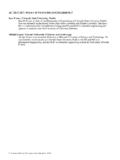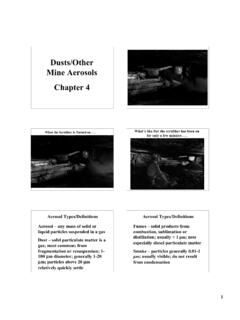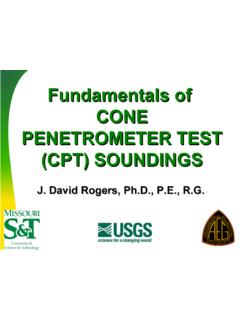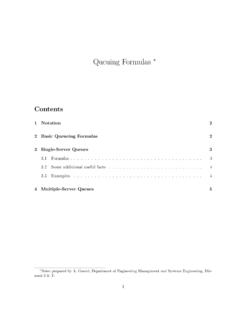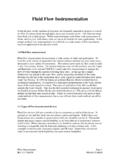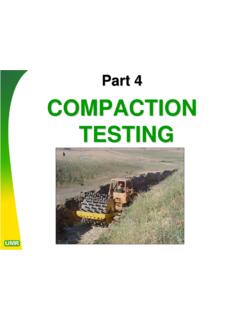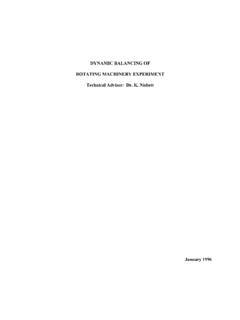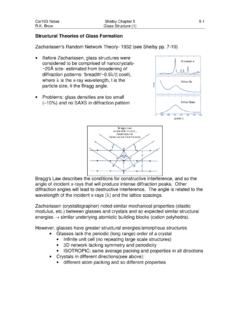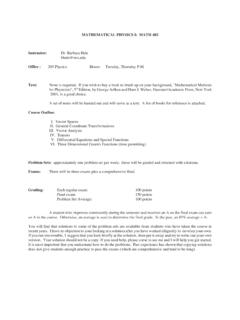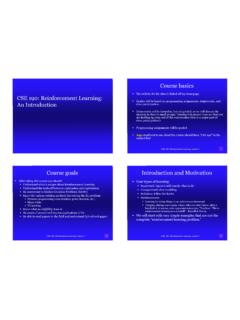Transcription of A Tutorial for Reinforcement Learning - Missouri S&T
1 A Tutorial for Reinforcement Learning Abhijit Gosavi Department of Engineering Management and Systems Engineering Missouri University of Science and Technology 219 Engineering Management, Rolla, MO 65409. February 11, 2017. If you nd this Tutorial useful, or the codes in C and MATLAB at ~ useful, please do cite my book (for which this material was prepared), now in its second edition: A. Gosavi. Simulation-Based Optimization: Parametric Optimization Techniques and Re- inforcement Learning , Springer, New York, NY, Second edition, 2014.
2 Book website: 1. Contents 1 introduction 3. 2 MDPs and SMDPs 3. 3 Reinforcement Learning 7. Average reward .. 7. Selecting the appropriate Learning rate or step size .. 10. Discounted reward .. 10. Codes .. 11. 4 MDP Example 12. Average reward .. 12. Discounted reward .. 12. 5 Conclusions 13. 2. 1 introduction The Tutorial is written for those who would like an introduction to Reinforcement Learning (RL). The aim is to provide an intuitive presentation of the ideas rather than concentrate on the deeper mathematics underlying the topic.
3 RL is generally used to solve the so-called Markov decision problem (MDP). In other words, the problem that you are attempting to solve with RL should be an MDP or its variant. The theory of RL relies on dynamic programming (DP) and arti cial intelligence (AI). We will begin with a quick description of MDPs. We will discuss what we mean by complex and large-scale MDPs. Then we will explain why RL is needed to solve complex and large-scale MDPs. The semi-Markov decision problem (SMDP) will also be covered. The Tutorial is meant to serve as an introduction to these topics and is based mostly on the book: Simulation-based optimization: Parametric Optimization techniques and rein- forcement Learning [3].
4 The book discusses this topic in greater detail in the context of simulators. There are at least two other textbooks that I would recommend you to read: (i) Neuro-dynamic programming [1] (lots of details on convergence analysis) and (ii) Rein- forcement Learning : an introduction [8] (lots of details on underlying AI concepts). A more recent Tutorial on this topic is [7]. This Tutorial has 2 sections: Section 2 discusses MDPs and SMDPs. Section 3 discusses RL. By the end of this Tutorial , you should be able to Identify problem structures that can be set up as MDPs / SMDPs.
5 Use some RL algorithms. We will not discuss how to use function approximation, but will provide some general advice towards the end. 2 MDPs and SMDPs The framework of the MDP has the following elements: (1) state of the system, (2) actions, (3) transition probabilities, (4) transition rewards, (5) a policy, and (6) a performance metric. We assume that the system is modeled by a so-called abstract stochastic process called the Markov chain. When we observe the system, we observe its Markov chain, which is de ned by the states. We explain these ideas in more detail below.
6 State: The state of a system is a parameter or a set of parameters that can be used to describe a system. For example the geographical coordinates of a robot can be used to describe its state. A system whose state changes with time is called a dynamic system. Then it is not hard to see why a moving robot produces a dynamic system. Another example of a dynamic system is the queue that forms in a supermarket in front of the counter. Imagine that the state of the queuing system is de ned by the number of 3. people in the queue. Then, it should be clear that the state uctuates with time, and then this is dynamic system.
7 It is to be understood that the transition from one state to another in an MDP is usually a random a air. Consider a queue in which there is one server and one waiting line. In this queue, the state x, de ned by the number of people in the queue, transitions to x + 1 with some probability and to x 1 with the remaining probability. The former type of transition occurs when a new customer arrives, while the latter event occurs when one customer departs from the system because of service completion. Actions: Now, usually, the motion of the robot can be controlled, and in fact we are interested in controlling it in an optimal manner.
8 Assume that the robot can move in discrete steps, and that after every step the robot takes, it can go North, go South, go East, or go West. These four options are called actions or controls allowed for the robot. For the queuing system discussed above, an action could be as follows: when the number of customers in a line exceeds some pre xed number, (say 10), the remaining customers are diverted to a new counter that is opened. Hence, two actions for this system can be described as: (1) Open a new counter (2) Do not open a new counter.
9 Transition Probability: Assume that action a is selected in state i. Let the next state be j. Let p(i, a, j) denote the probability of going from state i to state j under the in uence of action a in one step. This quantity is also called the transition probability. If an MDP has 3 states and 2 actions, there are 9 transition probabilities per action. Immediate Rewards: Usually, the system receives an immediate reward (which could be positive or negative) when it transitions from one state to another. This is denoted by r(i, a, j).
10 Policy: The policy de nes the action to be chosen in every state visited by the system. Note that in some states, no actions are to be chosen. States in which decisions are to be made, , actions are to be chosen, are called decision-making states. In this Tutorial , by states, we will mean decision-making states. Performance Metric: Associated with any given policy, there exists a so-called performance metric with which the performance of the policy is judged. Our goal is to select the policy that has the best performance metric.
